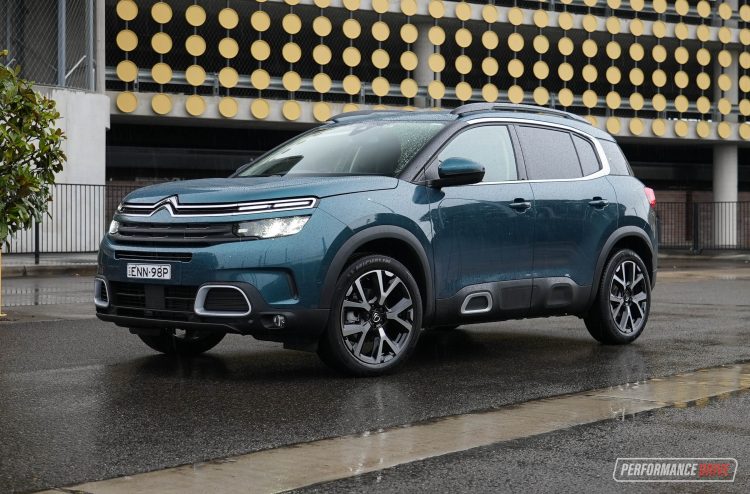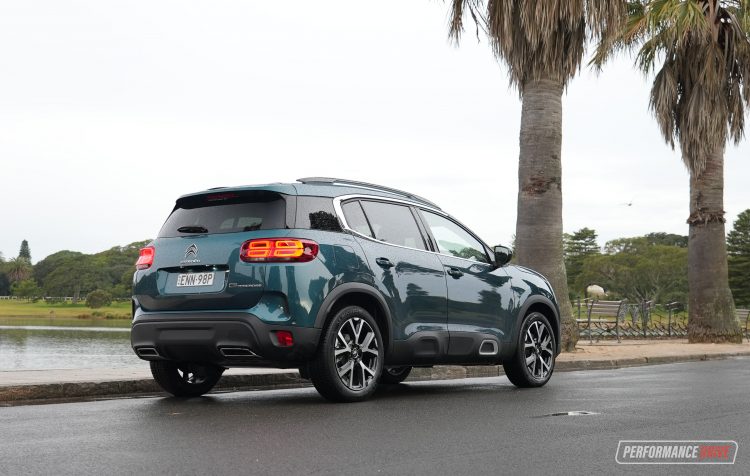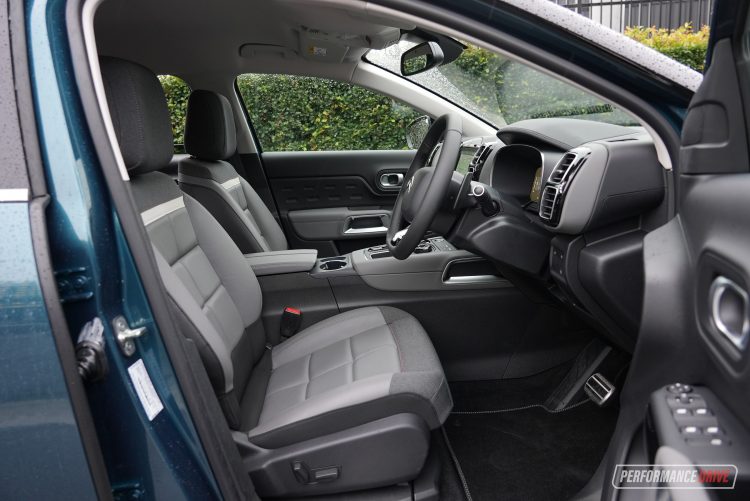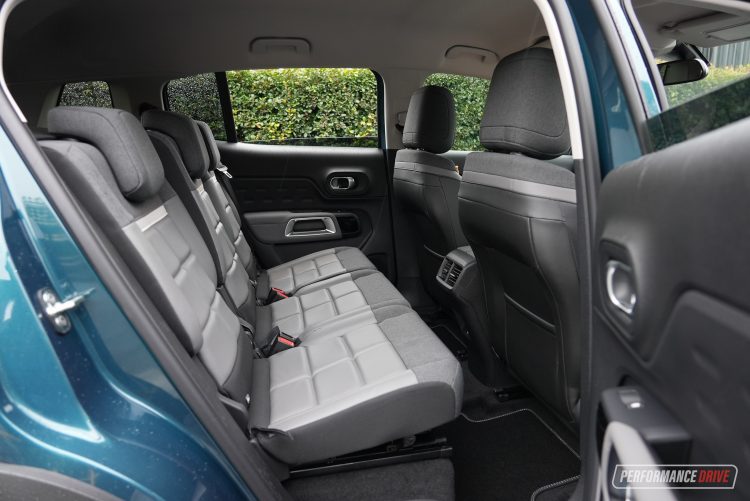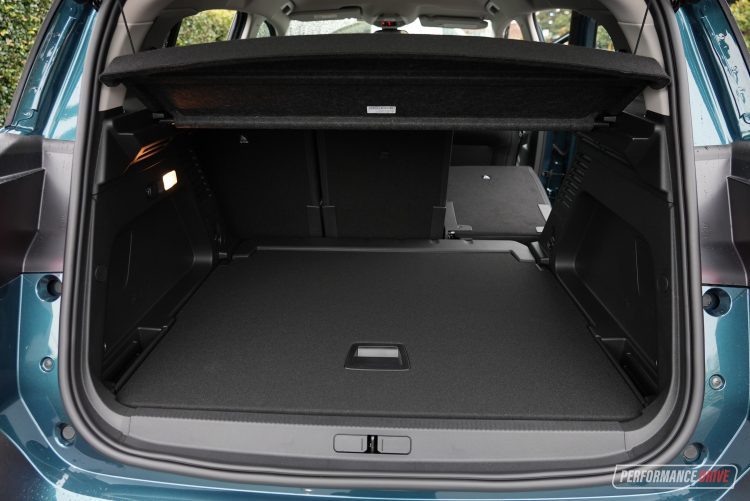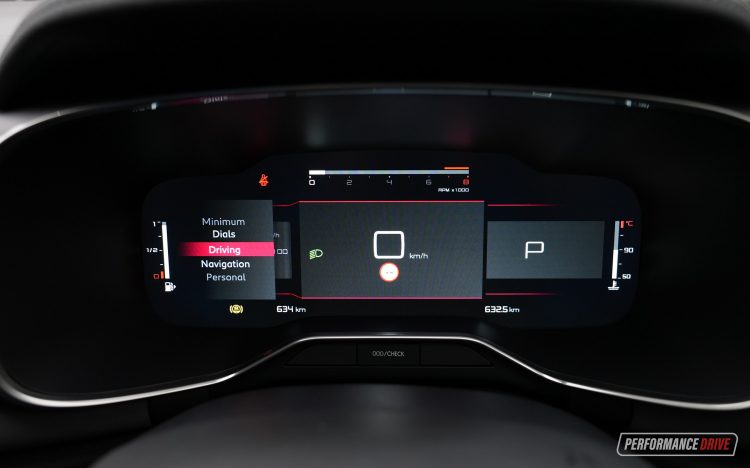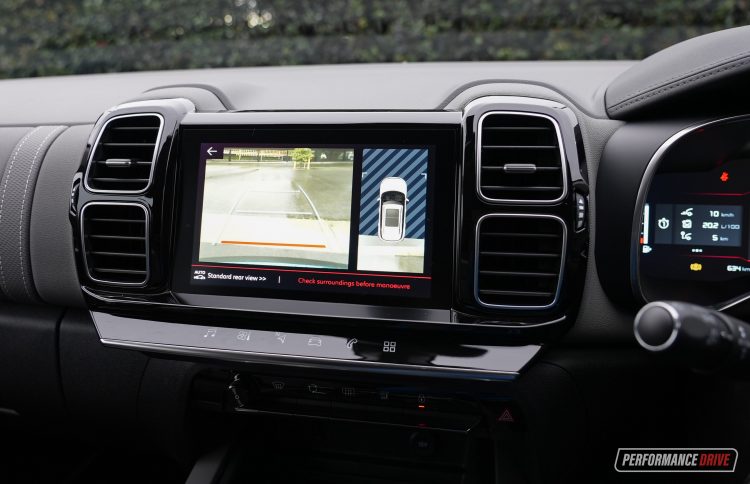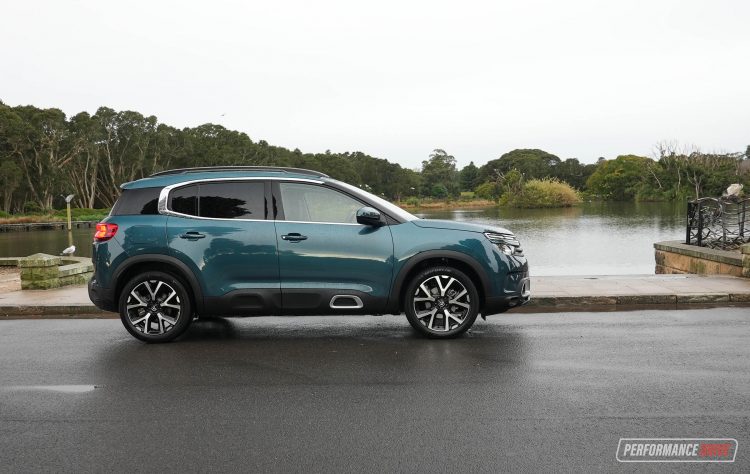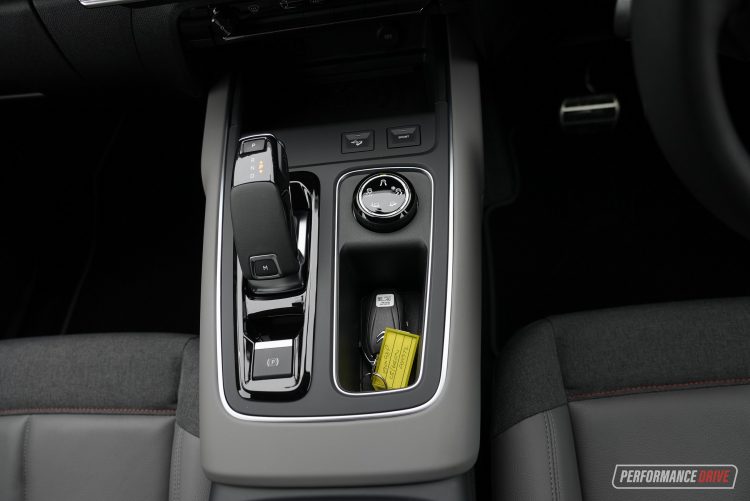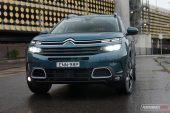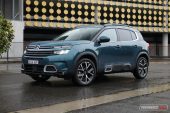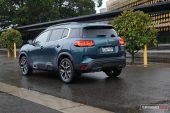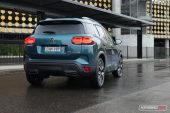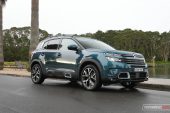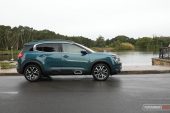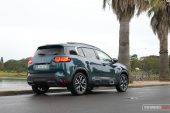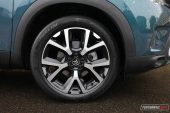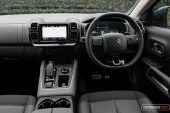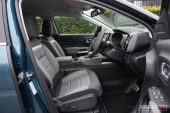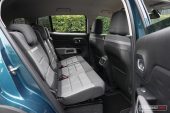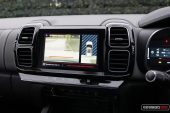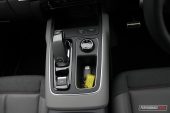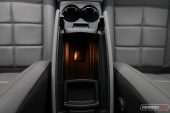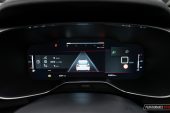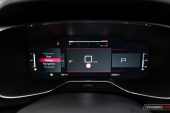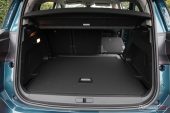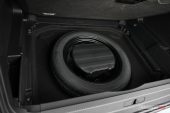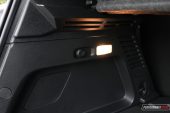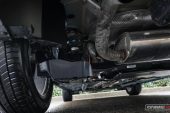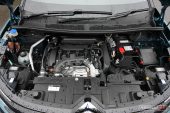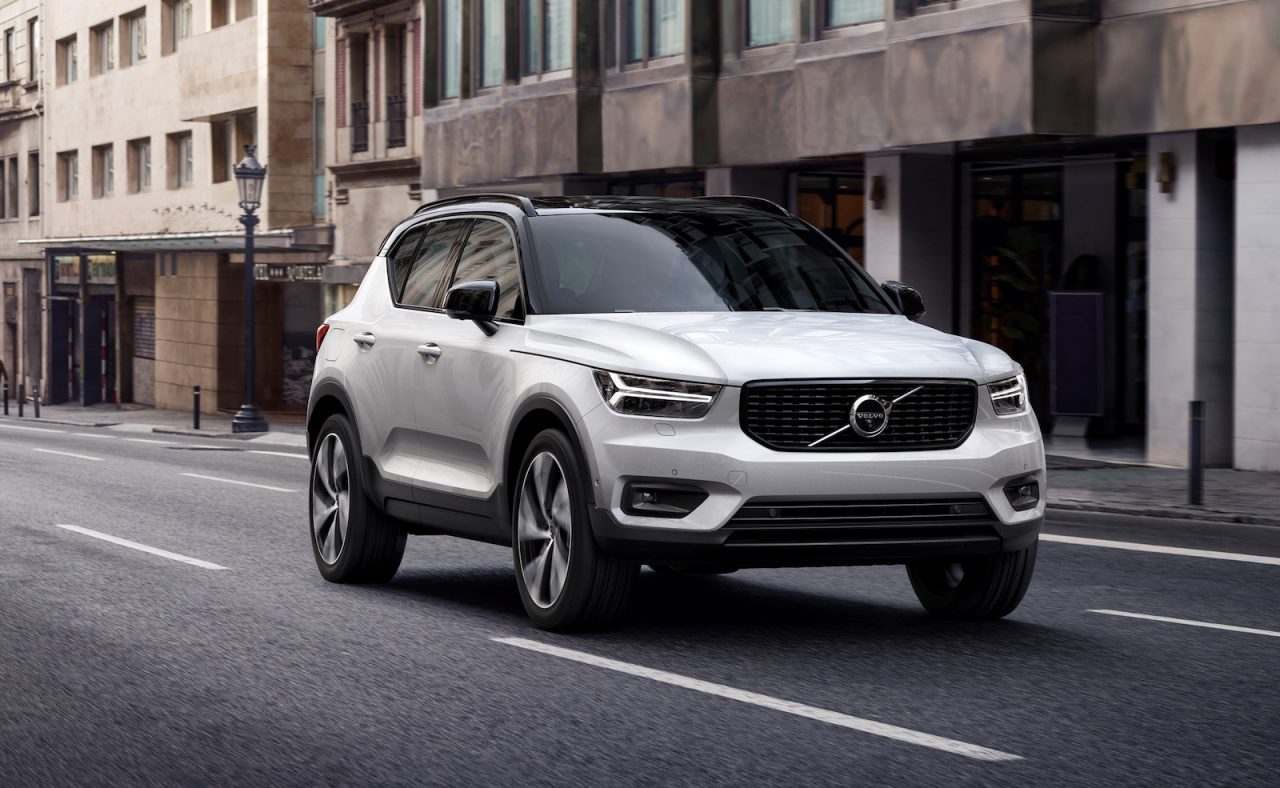If, somehow, you feel like there is not enough choice in the mid-sized SUV market, there are a select few that are often forgotten about. The French-built Citroen C5 Aircross places its best foot forward with a (very mild) mid-life update for 2021.
The C5 Aircross has practicality at the top of its priority. There’s a spacious interior, loads of storage options, and adjustable rear seats on rails. It also exhibits a funky design that distinguishes itself from the rest of the cookie-cutter SUVs on the market.
Sadly, the mid-life update brings a further narrowed lineup in Australia. The Feel variant has been deleted, leaving only one choice, the Shine. And you’re slammed with a price hike of $3000 to $46,990 (plus on-road costs), with no major feature or spec change. You get a 1.6-litre turbo-petrol four-cylinder engine matched to a six-speed auto. Only front-wheel drive is on offer.
2021 Citroen C5 Aircross – THE SPECS
[column width=”47%” padding=”6%”]Engine: 1.6-litre turbo-petrol four-cylinder
Output: 121kW@6000rpm / 240Nm@1400rpm
Transmission: Six-speed auto
Drive type: Front-wheel drive
Wheels: F & R: 19-inch alloy, 205/55
ANCAP: Four stars
Tare weight: 1420kg
Power-to-weight: 11.73:1 (kg:kW)
Official fuel economy: 7.9L/100km
Economy during test: 8.5L/100km
Fuel capacity/Type: 53L/95 RON[/column] [column width=”47%” padding=”0″]Power efficiency: 15.31kW:L/100km
0-60km/h: 4.35 seconds*
0-100km/h: 9.67 seconds*
60-110km/h: 7.09 seconds*
1/8 mile: 11.07 seconds at 107.5km/h*
1/4 mile: 16.95 seconds at 136.0km/h*
Max acceleration: 1.282g
100-0km/h braking: 3.07 seconds at 37.30 metres*
Max deceleration: -1.545g
Decibel at idle: 41*
Peak decibel at 60-100km/h: 82*
Priced from: $46,990[/column][end_columns]
* Based on 2019 Shine model, same spec. Figures as tested by PerformanceDrive on the day. Factory claims may be different
2021 Citroen C5 Aircross – THE PACKAGE
A funky and fresh design is top and centre for the C5 Aircross. Even after two years on the market. It looks playful but is still practical. Up the front, it exhibits a tall, rounded bonnet and new LED headlights (replacing halogen) that blend into a high dual grille. There are lots of soft-cornered rectangular design cues throughout the exterior, which add charisma. At the tail end, Citroen gets hip with some striking floating square-shaped LED lights. They appear to be suspended away from the car in mid-air. It looks cool.
Soft-cornered rectangles seem to be the theme inside as well. The door trims, air vents and even fonts use the trademark shape. We’d like to see less hard plastics inside to help make it feel a little higher in quality. On the other hand, the vibrant seats grab your attention quickly. It’s refreshing to see an alternative, hard-wearing fabric used for a practical SUV for a change. It’s kind of like the material used on a cool surf-branded backpack.
Adding to practicality, there is a huge centre bucket under the armrest to store your possessions, and enormous door pockets. Other highlights are the funky ambience of the LED cup holder surrounds at nighttime, and the overall spaciousness and brightness felt in the front row.
Up front would be the preferred place to be in the C5 Aircross. The seats are soft and supportive for lengthy drives, thanks to the use of memory foam and electronic adjustments for the driver. Only manual adjustments are available for the passenger, though. It’s also delightfully easy to hop in and out of due to an ideal ground clearance (186mm), high seating position, and the sheer width of the seats.
In the back, high stadium-style seats help to open up visibility. The seats are firm but adaptable thanks to their ability to split three ways. You can fold one, two or all three seats independently to negotiate passenger numbers or long objects, or simply to increase the boot size. They also (each) recline and slide on rails, which is very unique – and handy – for its class. However, they don’t slide further back into the boot to give you more legroom, making it a tad constricted for taller travellers. Oddly, there is no pull-down centre armrest, but it’s good to see rear air vents and a USB port.
On paper, cargo volume is claimed to one of largest in this segment, measuring 580 litres. But this is because of inconsistent measuring techniques across the competition. It is still a decent size, but on the narrower side due to impeding side walls in the boot area. It appears to be larger than the Mazda CX-5’s boot, but just shy of the Subaru Forester and Toyota RAV4’s boots.
In terms of tech, there is an 8.0-inch centre touch-screen that supports Android Auto, Apple CarPlay and MirrorLink. But it incorporates the air-con controls too which makes it fiddlier to change common settings.
You also get wireless phone charging, sat-nav, digital radio, a crisp, clean, and attractive 12.3-inch TFT digital instrument cluster, electronic tailgate with foot gesture control, keyless entry, and auto wipers and headlights. In other words, it is quite well equipped for its price.
Regarding safety tech, the C5 Aircross comes standard with forward collision warning with auto emergency braking, driver attention alert, active lane-keeping assist and departure warning, blind-spot sensors, a poor quality rear-view and 180-degree camera, road-sign recognition, front and rear parking sensors, and tyre pressure sensors. 2021 still sees the lack of adaptive cruise control. And detrimentally, it is one of only a few vehicles on the Aussie market that scores 4 out of 5 stars by ANCAP.
Citroen as a brand does not have a huge presence in Australia. This usually results in expensive servicing costs. But improvements have been made in recent years. For example, the French brand now offers a five-year, unlimited kilometre warranty, and servicing is only required every 20,000km or 12 months. The brand also commonly runs deals offering free scheduled services for five years (currently the case at the time of writing this review).
2021 Citroen C5 Aircross – THE DRIVE
As the song usually goes, other regions have various engines to pick from. But here in Australia, we only get the one 1.6L turbo-boosted petrol engine. It’s not the most outstanding aspect of the C5 Aircross, especially compared with some of the more modern competitors. It produces a conservative 121kW and 240Nm. It sufficiently keeps up with everyday chores, but it doesn’t stand out in any area. You’ll find you need to give it the custard on inclines when you have a full load, or when you need to take over other vehicles hastily. The official 0-100km/h time is a sluggish 9.9 seconds. We timed it in 9.67 seconds.
The six-speed auto gearbox co-developed with Aisin helps to move along in a zippy fashion when already rolling. But it’s difficult to overcome an unforgivable acceleration delay on take-off, and on re-applying the accelerator at lower speeds. It’s a trait we usually associate with dual-clutch gearboxes, but the C5 Aircross uses a conventional auto. It must be in the computer programming. The outcome is erratic acceleration at times, as it is virtually impossible to create a chauffeur-like progressive take-off.
A heavy focus on creating a comfortable and soft ride has been enshrined in all Citroen cars for many decades. But where does this leave SUVs for the brand? Citroen has patented a new hydraulic suspension setup that it calls “Progressive Hydraulic Cushions”, or PHC for short. Basically, conventional suspension is made up of a shock absorber, a spring, and a mechanical stop. The PHC system adds two hydraulic stops on either side; one for compression, and the other for decompression.
On the bitumen the Aircross is about as soft as they come. All bumps are glided over impeccably, and at highway speeds the softness will send your kids to sleep. But this means that in combination with the greater ground clearance, taking on corners fast causes a bouncy, leaning, pogo stick feel. And that lag and acceleration jerkiness also plays in with the soft and bouncy setup to create an almost insecure driving experience in certain conditions.
The C5 Aircross appears to be a very capable SUV off-road on the outside. But looks can be deceiving. There are selectable driving modes for dirt, snow, sand, and steep declines. But we’re not sure how useful they would be, given that power only goes to the front wheels. And there is no option to choose all-wheel drive in the limited fleet. However, the Michelin tyres are excellent. The brakes feel confident and fadeless as well. Though, they are touchy on initial press, then gentle and progressive the rest of the way.
You might assume that being a miniature four-cylinder engine means the C5 Aircross will be thrifty on fuel. Yes, to some degree. There is a need to frequently put your foot down more than expected to get the job done, as highlighted. Over 323km, our average was 7.8L/100km. This was slightly better than the official average of 7.9L/100km. In today’s fuel-conscious market though, it should be less. Especially since it is not an all-wheel drive, and the meagre engine outputs. It also only weighs 1402kg. A minimum of 95RON petrol is required.
2021 Citroen C5 Aircross – THE VIDEO
2021 Citroen C5 Aircross – THE VERDICT
Before we got behind the wheel of the Citroen C5 Aircross we were excited by the funky and unique exterior design, and the playful and practical interior. But when the wheels started rolling, we were slightly let down by an underpowered engine with silly acceleration traits.
It could also be made much more palatable among the mid-sized SUV market if it came with radar cruise control, all-wheel drive, and passed five-star ANCAP safety credentials. These could also help to justify the recent price increase. It is a fun SUV compared with many others though, and certainly worth a look if you want something a little different to the very common rivals.
[column width=”47%” padding=”6%”]PROS:
– Fresh and funky design, inside and out
– Airy and practical interior
– Citroen’s ‘PHC’ suspension absorbs bumps impeccably
– Soft memory foam seats with a groovy dual fabric and colour[/column] [column width=”47%” padding=”0″]CONS:
– Weird acceleration delay at times
– No adaptive cruise control
– Price climbed $3000 with no spec change since 2019
– 4-star safety rating[/column][end_columns]
As always, if you’re thinking about buying a new car don’t forget to click here to speak with our car buying specialists.
